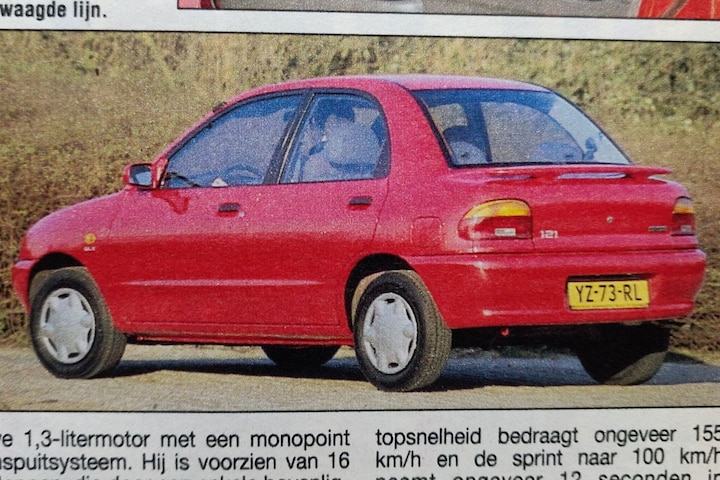The second generation of the Mazda 121 is without a doubt one of the most roguish cars ever to appear on Dutch roads. Exactly 30 years ago we drove ‘het Bolhoedje’ for the first time and the first impression was certainly not wrong.
While practice has proven that creative indulgences by car manufacturers don’t necessarily pay off in good sales, we can actually always appreciate a little extravagance. Mazda threw ‘its hair loose’ in the early 90s by giving the extremely inconspicuous first 121 a very characteristic successor. In the Netherlands, the car was soon nicknamed ‘Bowler Hat’, meant by some jokingly, but above all affectionately. It was a crazy but fun thing to watch; a very short sedan with a relatively high roof.
With due curiosity we got behind the wheel of the 121 exactly 30 years ago. A simple steering wheel, but behind that Mazda showed creativity again: the counters had a blue background. Furthermore, the 121 looked modern yet simple. The round shapes that designers could not get enough of later in the 90s were also omnipresent here. Another 90s detail: slightly too happy upholstery with a pattern as you would expect in a city bus. The editor of the service described it at the time as ‘a fabric of beautiful design’.

Although the high roof of the 121 was one of the most striking aspects and earned it its nickname, it was above all very smart. We discovered that the headroom in the little Japanese was exceptionally good and stated that even the then tallest man in the Netherlands with his 2.23 meters could sit well in it. Mazda also had it well for each other in terms of space in the back of the 121. A hatchback flap was of course a shortage for ease of loading, but under the boot lid still appeared quite a nice and especially deep cargo space.
Once on the road with the 121, we noticed that the driving comfort was very good. The somewhat stiff seats offered sufficient support and made a longer ride no punishment. However, the support of the lower back could have been better. The chassis was also fairly stiff, but it did not make it uncomfortable. Rather, it ensured that as a driver you had clear control over what happened under the car and ensured ‘not exceptional but just above average’ steering behavior.

Then there was the engine: in the test car, the 121 GLX, it was the 73 bhp 1.3 with sixteen valves. Just a step above the also available 54 hp version of the 1.3. The 73 hp version was the one you could choose best, 0 to 100 km / h went in about 12 seconds and the top speed was 155 km / h, according to our own measurements. That was not great, but just fine. We did notice that the block became a bit noisy once it went faster than 100 km / h. The 121 was therefore especially in place in urban areas.
All in all, we were immediately charmed by the Bowler Hat and thought it ‘a real asset in the car country’. In its first year of sale it proved its appeal: 3,614 Dutch people signed for a 121. An annual total that the Fiesta twin brother from afterwards could not match. Nevertheless, the numbers quickly declined in the following years and the nice ‘convertible top’ with its electronically retractable fabric roof could not turn that tide. About 9,300 Bowler hats were sold in the Netherlands. At the moment there are still roughly 170 on Dutch registration. If you buy one now, you get a rare and fun piece of car history at home!